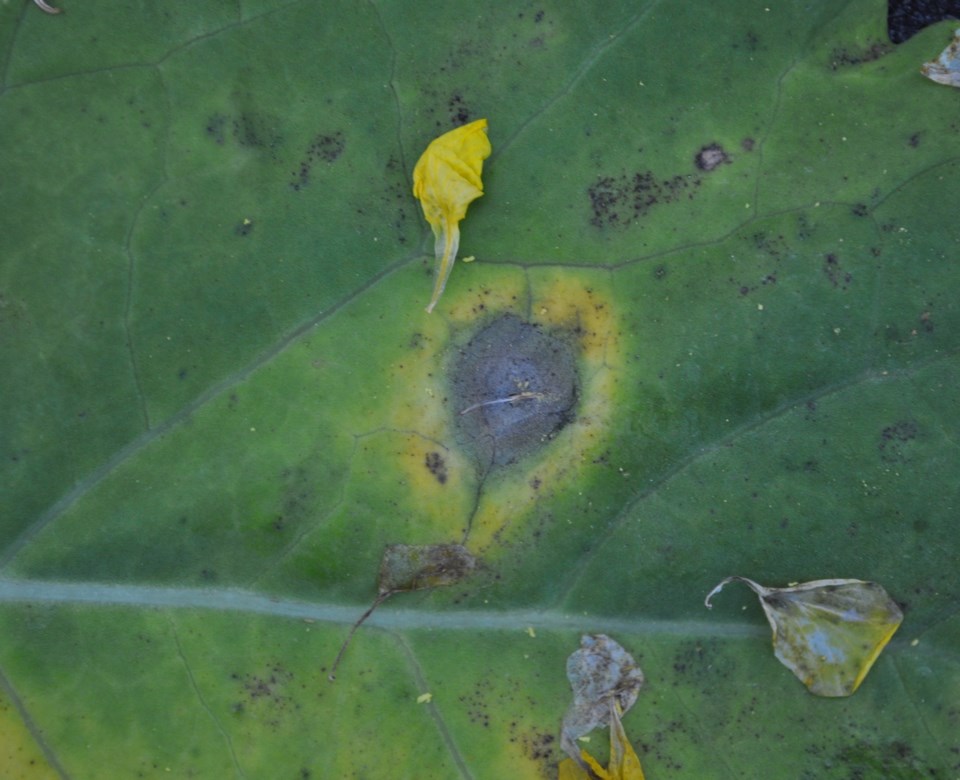From Canola Watch
The decision whether to spray for sclerotinia stem rot in canola begins with a moisture assessment about three weeks before flowering. The situation before that point is almost irrelevant, given the canola plant’s ability to crank up yield potential in response to improved growing conditions. Sclerotinia stem rot can go from no risk to high risk with a timely period of regular rains and humidity.
Moisture before flowering will result in the emergence of spore-producing apothecia. Under ideal warm and moist conditions, it takes around three weeks for sclerotia to germinate and release ascospores. Moisture during flowering will enable ascospores to infect canola petals and grow into leaf and stem tissues when the infected petals fall into the crop canopy. Spraying after flowering or after symptoms have appeared on the plant is too late, so the decision has to be based on the risk situation before and during the spray window — which is 20 to 50 per cent flower — and the forecast of weather and yield to come.
Risk of economic levels of sclerotinia stem rot INCREASES with:
• A wet soil surface underneath the canola canopy for most or all of the day. This promotes germination of sclerotia and production of apothecia, the tiny mushrooms that release sclerotinia spores.
• The presence of apothecia, which are a sign that spores will be present. Other options for spore detection are the Spornado (from 20/20 Seed Labs) or DNA-based petal tests (from Quantum Genetix and Discovery Seed Labs).
• Higher yield situations. Yields are difficult to predict, so a better indicator may be a canopy dense enough to create the humid microclimate that favours disease. If you walk through the canopy in early afternoon and your pants get wet, the field has favourable conditions for infection.
• Moderate average temperatures of 15-25°C and moderate rainfall that favour host infection while extending the bloom period and reducing sloughing off of leaves, thus maintaining potential infection sites.
• Extensive sticking/clumping of petals in the crop canopy, especially in the leaf axils and bases.
• A history of significant levels of sclerotinia in the specific field or in adjacent fields. Host crops include canola, soybeans, sunflowers, potatoes and pulses.
Risk of economic levels of sclerotinia stem rot DECREASES with:
• Dry conditions through the flowering period.
• A poor canola canopy that allows for a lot of air flow. When doing the wet pants test, if the canopy and your pants and boots are dry at 8-10 a.m., then the field has less favourable conditions for the disease.
• Well below- or above-average temperatures (less than 10°C or more than 25-30°C) and limited rainfall.
• A large rainfall event over one or two days that is followed by several days of dry, warm conditions.
• Continuous rain events that may lead to washing off of petals from plants and remove spores from the air, while trapping spores in water droplets that form on the tops of the apothecia. Note that a moisture situation like this that actually reduces sclerotinia stem rot risk would be unusual.
Management approaches if the potential for disease is uncertain:
• Apply the lowest rate of fungicide. Use programs or lowest-cost products to keep costs as low as possible.
• Always use highest label water rates to get the most coverage and best efficacy.
• If perked-up fields are to rebound and achieve target yields, they will likely have to branch out and flower for longer. In this situation, ‘full flower’ (50 per cent flower) could last a week or more. This can be an effective time to spray, especially in a situation where moisture changed dramatically for the good and the crop canopy is slowly filling in. Farmers in this situation may choose to wait a little longer to assess crop recovery before making the spray decision.
• Generally, early infections cause more yield loss than later infections, which is why the economic benefit of a fungicide application is usually higher with early applications.
• Consider an ‘on-off’ or zone-spraying approach, basing it on previous yield maps or current NDVI maps. Fungicide application could be turned ‘on’ for areas with high yield potential and ‘off’ for typically low-yielding areas.
• If you need to spray so you can sleep at night, then spray. But leave a few test strips to compare disease amounts and yield. This can help with future decisions.
Conditions where a grower may want to spray more than once:
• Variable crop staging that extends the flowering period.
• Thin stands mean branchier plants and an extended flowering period.
• Note that continued rain throughout flowering will add to the yield-loss risk for the first two scenarios.
• Regrowth after a hail.
• In any of these situations, assess yield potential and crop stage relative to the calendar when penciling out the potential return on investment.
For the complete version of this article, including links and photos, go to canolawatch.org and search for ‘Moisture kickstarts sclerotinia spray decision’. While there, subscribe to receive the Canola Council of Canada’s free and timely agronomy updates.
��




